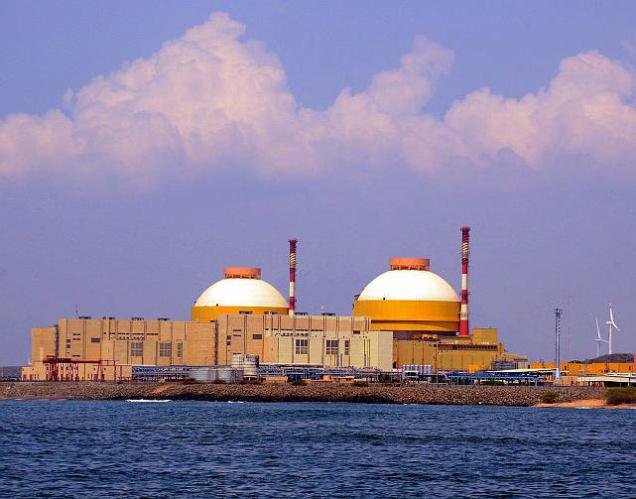

A high-level Environment Ministry panel has recommended coastal regulatory zone (CRZ) clearance for setting up a desalination unit at Koodankulam Nuclear Power plant (KKNPP) in Tamil Nadu.
The desalination plant functions on the distillation (Mechanical Vapour Compression) principle. Seawater will be drawn and will be fed to the plant. At KKNPP, the desalination plant consists of four streams each having a capacity of 106.66 cubic meter per hour.
When the issue came up before the Supreme Court last year, the government had said that desalinated water used as a coolant would be discharged into the sea but this would not affect marine life. In its affidavit, Nuclear Power Corporation of India Ltd had said that no danger would be caused by spent fuel after being discharged from the nuclear reactor.
“These discharged materials include uranium and plutonium, which constitute about 96 per cent and 1 per cent of the spent fuel respectively. The remaining 3 per cent cannot be recycled,” the NPCIL had said.
In its recent meeting, the Expert Appraisal Committee (EAC) for Coastal Regulation Zone recommended the project, suggesting that all the condition stipulated by the Pollution Control Board as well as Tamil Nadu Coastal Zone Management Authority should be complied with.
It also said that periodical monitoring of the “sea water quality near the outfall” should be done.
According to the officials, out of the four installed streams, only three will be operating and one will be in standby mode.
There will be generation of brine reject from the desalination process. This reject is nothing but the concentrated seawater, which remains after desalination process and does not contain external elements.
The project was granted clearance in 1989 prior to the CRZ Notification, 1991. Prior to 1991, there were guidelines or restrictions on development within 500 m along coast.
In April 1989, when the then Prime Minister Rajiv Gandhi approved an exemption of the 500 metre norm specifically for the Koodankulam project, fresh water was proposed to be drawn from Pechiparai Dam, which is situated at about 65Km from the plant site.
However, it was abandoned due to practical difficulty and NPCIL, in 2004, decided to establish a desalination plant to provide adequate fresh water supply for domestic water requirements and for the plant.
Gallagher Re has shed light on the significant challenges insurers face when providing coverage for…
The Australian government will disburse AUD 1.7 million (USD 1.1m/EUR 1m) in grant funding to…
GlobalData’s latest report, ‘Asia Pacific Renewable Energy Policy Handbook 2024’ is among the latest region-specific…
The electrical generation market is facing a number of challenges, including the need to increase…
Nuclear energy has emerged as a prominent player in Asia's energy landscape, offering a reliable…
The pursuit of a low-carbon future has gained significant momentum globally, and Asia stands tall…